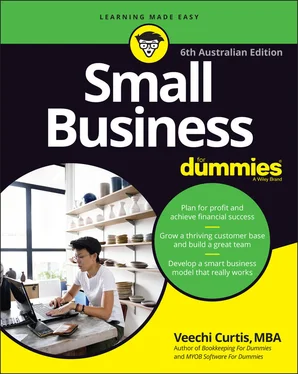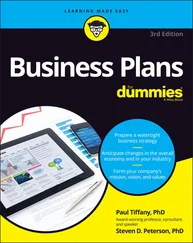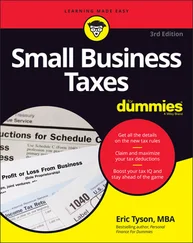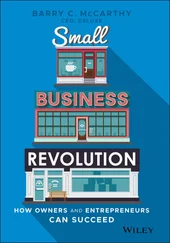In Chapter 5, I talk about your vision for the future, and how important it is to keep your eyes open to trends in the economy, the environment and in your industry. This macro way of thinking is also useful at the early planning stages of your business, particularly if you spend a while thinking not just who your competitors are right now, but also who your competitors could be in one, two or five years’ time.
Ask yourself questions relating to the following areas:
Automation potential: Could any existing competitors automate their processes using advanced technology and, therefore, become more of a threat than they already are?
Big players coming to town: Could a franchise chain or large company move into your village, suburb or town and take lots of your customers? (In my village, the longstanding boutique wine store struggled when two big liquor chains moved within 3 kilometres.)
Buyout of minor competitors by a larger competitor with more capital and muscle: Could one of your existing competitors be bought out by someone with more capital and better distribution and, in the process, become a very formidable competitor? (Think about how some smaller gourmet food brands have been purchased by supermarket chains and suddenly appear in every store.)
Changes in technology: Could changes in technology mean your product or service becomes obsolete? (Think of the long-lost corner video store, the appliance repair technician or the 24-hour photo lab.)
Cheaper imports: Could the goods you provide be substituted by imported goods if the exchange rate changes?
Customers doing it themselves: Could your main customer or customers decide creating your product or providing your service in-house makes more sense? (Think of the big supermarket chains that now manufacture their own generic food lines.)
Life cycle of business idea: Is the life cycle of your business reaching maturity or beyond, meaning numerous competitors and fewer profits to go around? (Think of the mobile coffee vans that were once a clever niche business but are now a dime a dozen.)
Offshoring of labour: Could the services you provide be performed offshore instead? (Almost anything that’s mostly labour and can be done on a computer is vulnerable to offshoring.)
Service offered online: Could the service you provide be sold online and, therefore, open to international competition? (Even some things that I would never have imagined could go online have done so. I don’t go to my local yoga class any more, but instead log onto a yoga website that offers hundreds of pre-recorded classes to fit any duration, level or style of yoga.)
 WHY YOU CAN SOMETIMES BEAT THE BIG GUYS
WHY YOU CAN SOMETIMES BEAT THE BIG GUYS
When you’re checking out competitors, you may come across lots of factors that make it tough for you to compete with the big guys in town, such as high capital costs, expensive IT systems or huge distribution networks. These factors are called entry barriers .
The flipside of entry barriers can be exit barriers . Sometimes competitors have invested so much in expensive rentals or specialised equipment, or sometimes competitors can be so management top-heavy, that they can’t get easily out of the less profitable parts of their business, and also can’t act quickly when opportunities arise.
For smaller businesses, these exit barriers sometimes point to opportunities. Maybe you can distribute product much more cheaply using the internet, while the competition is wedded to expensive retail rentals. Similarly, maybe you can act quickly in response to new fads or fashions, creating and promoting products in a fraction of the time a big company takes to do the same thing.
Choosing Your Competitive Strategy
Any business, including yours, is faced with these three possible competitive strategies.
Pick one, and only one, competitive strategy
Don’t try to be all things to all people. Pick one of these strategies, and only one, and run with it:
Be the cheapest. With a cost leadership strategy , you’re not necessarily the cheapest across all products you offer, or the cheapest for every service but, in general, you’re aiming to compete on price. Price leadership can be a tempting strategy — after all, customers are always looking for a bargain — but is risky over the long term. Unless you have a strategic advantage that enables you to deliver your product or service more cheaply than your competitors, competing on price can mean weak profitability. (On the other hand, if you’re just getting started, choosing to be cheapest may be a good strategy for gaining clients and building up experience.)
Create a point of difference. With a differentiation strategy , you set out to differentiate yourself in some way other than price. For example, an electrician could seek to make response time and punctuality a point of difference (‘We’ll arrive within 30 minutes of the agreed time or the first hour is free’), or could make availability a point of difference (‘24-hour call-out service, 7 days a week’.) Ideally, if you choose differentiation as your competitive strategy, you want to find a synergy between this differentiation and the strategic advantage you identified earlier in this chapter. For example, maybe a strategic advantage for this electrician is that his partner also has a trade license. Between them, they can offer a 24-hour service without worrying about leaving the kids unattended at home, and they don’t have to pay the penalty rates that other businesses would normally have to pay if sending an employee out on a job in the middle of the night on a Sunday.
Find a particular focus or niche: With a niche strategy , your aim is to serve a specific market segment rather than deal with the whole market. In We Are All Weird , written by Seth Godin and published by Brilliance Corporation, Godin argues that people are seeking choices more than ever, and that this competitive strategy is an increasingly smart pathway for business.
 Always try to pursue a clear strategy. If you choose to muddle along not doing anything that’s clearly different from others, you will find it difficult to both compete and establish a clear strategic advantage in the market.
Always try to pursue a clear strategy. If you choose to muddle along not doing anything that’s clearly different from others, you will find it difficult to both compete and establish a clear strategic advantage in the market.
DON’T BE AFRAID TO PIKE OUT
I sometimes find that when people do an honest appraisal of their business idea and the competition, the resulting business proposal is found to be quite weak. Sometimes this is because the person starting up in business has limited skills or minimal capital; other times, the demand for their proposed product or service may not be strong enough. Other times again, it can be too hard competing against established players.
If you’re starting to question the strength of your business idea, don’t be afraid to pike out. Stopping at this stage might save thousands of dollars, not to mention months or even years of your time.
If you’re unsure whether your business idea is as strong as it could be and whether you should continue, what becomes relevant is measuring up the risks. If starting (or continuing with) this business means little capital outlay and a few lost weekends and holidays, you don’t have much to lose. On the other hand, if this business involves your entire retirement savings and/or the threat of a failed relationship if things go wrong, the risk may well be unjustifiable.
Connecting your competitive strategy to your strategic advantage
Читать дальше

 WHY YOU CAN SOMETIMES BEAT THE BIG GUYS
WHY YOU CAN SOMETIMES BEAT THE BIG GUYS Always try to pursue a clear strategy. If you choose to muddle along not doing anything that’s clearly different from others, you will find it difficult to both compete and establish a clear strategic advantage in the market.
Always try to pursue a clear strategy. If you choose to muddle along not doing anything that’s clearly different from others, you will find it difficult to both compete and establish a clear strategic advantage in the market.










